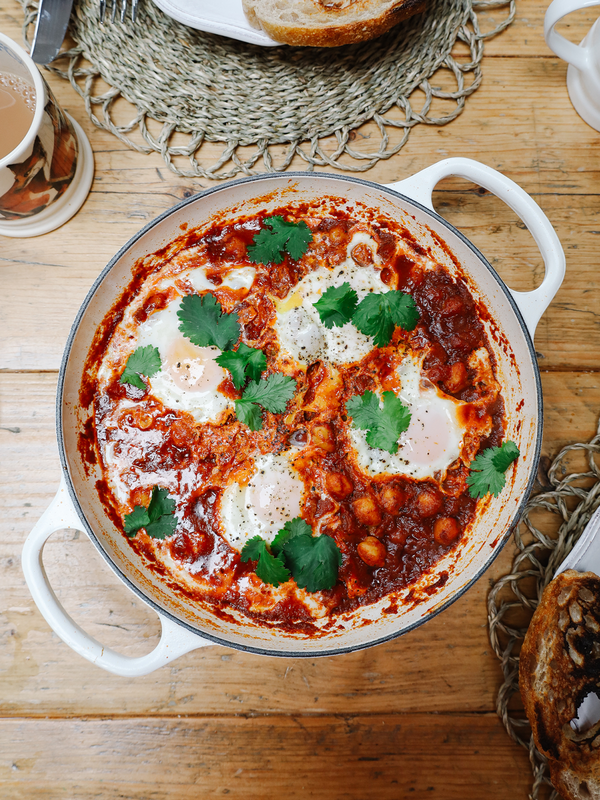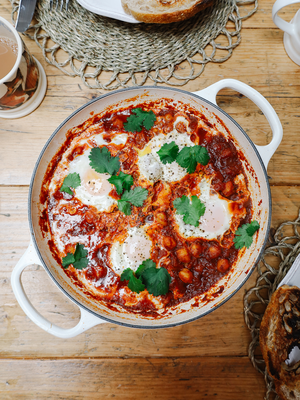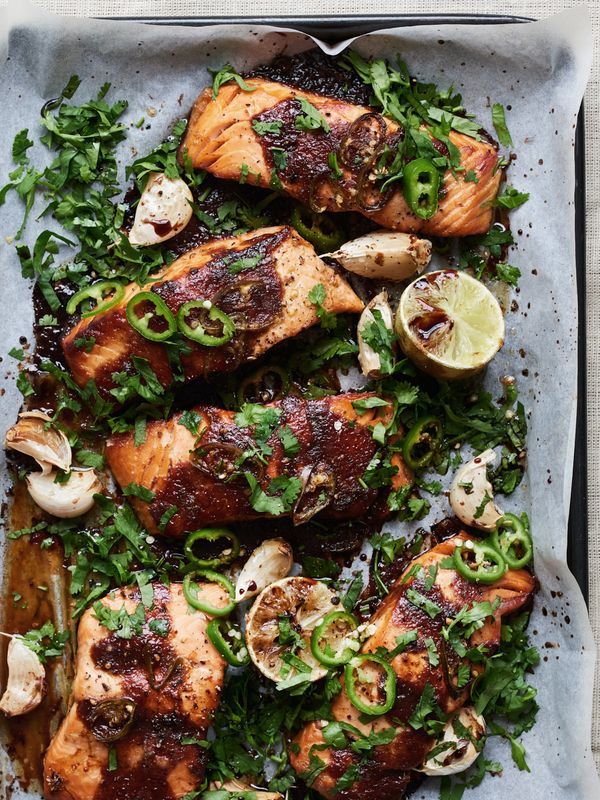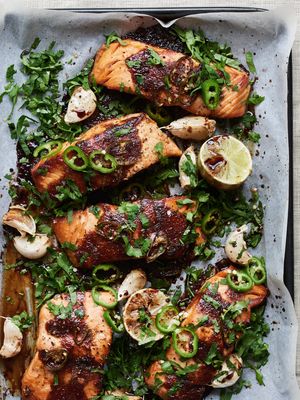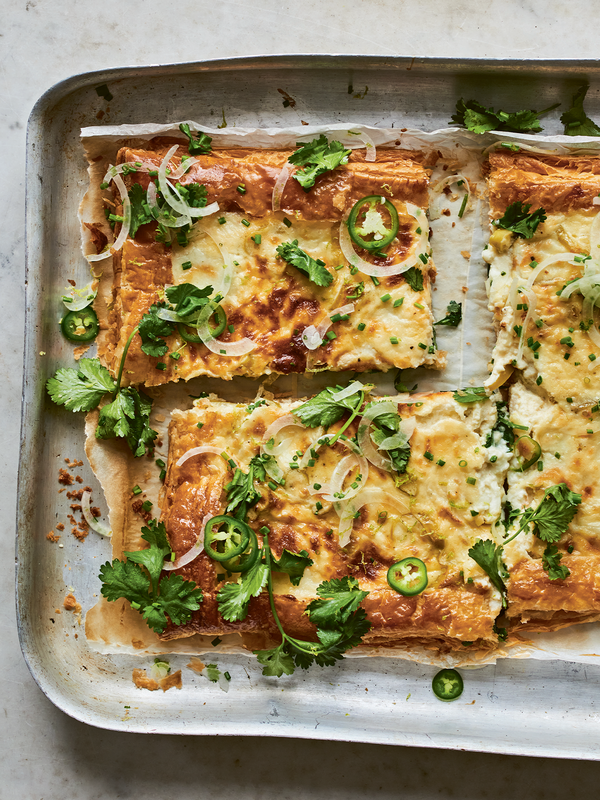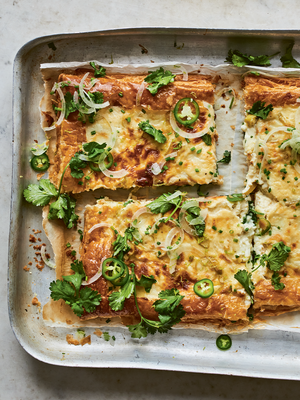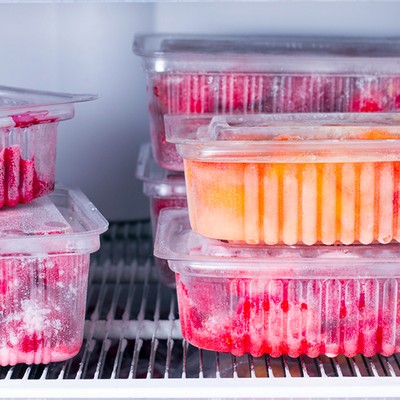
The Complete Guide To Freezing Food
THE BASIC DOS & DON’TS
Don’t Use Glass
It doesn’t do to use glass containers unless they’re specifically marked as freezer-safe. When liquids freeze, they expand, which means glass jars can shatter if they haven’t been tempered. If in doubt, go for flexible Tupperware or freezer bags instead. Those trying to cut down on plastic could use food wrappings, although it’s best to keep all items completely airtight to avoid freezer burn (which happens when frozen food meets air) and risk changing the texture and flavour.
Do Think About Location
While you shouldn’t overload the freezer, it’s important to consider the order in which you’re placing items. For example, the newest food should go in the bottom or near the back, with older items front and centre so you remember to use them. You might even like to colour code or label packages to help you remember how long items have been stored, or write a check list of all your frozen food (with dates).
Don’t Rush The Defrosting Process
According to top food hygiene standards, it’s rarely okay to rush the defrosting process – if the item requires it. That includes using hot water: you risk cooking the frozen food and changing its texture and flavour irreversibly. However, there are items like sliced bread or ready meals that can be cooked straight from frozen – just check the label first.
Do Check The Temperature
Food safety rules dictate that, to maintain freshness, food should drop to between 48°C and 21°C within two hours – and to between 21°C and 7°C within four hours – of cooking or purchasing. That means any cooked food should be left to reach room temperature before being placed in the freezer. If you’re not sure of the temperature inside the freezer, a specially designed thermometer will tell you if its right (-18°C is optimal).
Do Make The Most Of Your Ice Tray
Think outside the box and try blending herbs with water or olive oil before freezing in a tray. Wine can also be frozen as ice cubes, which can then be used to keep your drink cool without diluting it or in cooking. The same applies for stock.
WHAT NOT TO FREEZE
Specific Dairy
Although it’s perfectly possible to freeze, you risk milk turning lumpy once it thaws. If you’re planning to use it in cooking, this might be fine – but keep it away from your cereal. You might also find egg-based sauces, such as mayonnaise, will separate and curdle, while hard-boiled eggs will probably go rubbery once thawed.
Fried Food
Once defrosted, it’s likely the crispy coating will turn to mush – the same rule applies to desserts or pies with crumble toppings, which won’t maintain their crisp.
High-Water Content Veggies
Food items with a high water content are rarely going to be the same once frozen and then defrosted. The same rule applies to cucumber, bean sprouts and radishes.
Soft Herbs
It’s one thing to freeze chopped herbs using the ice-tray trick, but be aware that frozen herbs aren’t going to be good as garnishes. Stick to using them in soups or stews, which just need a flavour hit as part of the cooking process.
WHAT TO FREEZE
Fruit
Like to freeze fruit to use in smoothies or in crumbles and other desserts? It can be frustrating to find berries, grapes or other sliced ingredients stuck together in a frozen clump. Try freezing them on a baking sheet first, before placing in Tupperware or a freezer bag. There’s just one exception: bananas can be frozen whole in their skins (or sliced, if you prefer).
How long will they last?
Two to three months.
How to defrost them?
Most small fruit slices or berries will only take 30 minutes to reach room temperature, although some recipes will call just for the frozen stuff.
Vegetables
First, wash all vegetables before chopping them to the size you’re mostly likely to want when it comes to cooking or using them. If you want anything to retain that ‘snap’ –broccoli, green beans, sugar snaps, etc – remember to blanch them beforehand. However, vegetables that go soft when you cook them are fine to just pop straight in a freezer bag – just ensure you remove as much air as possible.
How long will they last?
Two to three months.
How to defrost them?
Most vegetables should be slowly brought back to room temperature in the fridge – just be sure to cook them within two to three days to maintain optimum taste and texture.
Dairy
Dairy is a nuanced category: different types of product react very differently to freezing and should be avoided altogether. Items that freeze well include hard cheese, butter and eggs which have already been cracked into small containers. However, hard-cooked egg whites will become tough and rubbery, while whole eggs will expand and crack their shells. Soft cheeses, especially cottage cheese, will turn grainy in texture, while sour cream is likely to curdle and separate. The same goes for most yoghurts, while milk should only be used in cooking for optimum taste.
How long will they last?
Two months – on average, depending on the product.
How to defrost them?
Some items, like parmesan rinds, can be used straight from the freezer to flavour soups or stews. Butter, milk and eggs should all be brought to room temperature slowly in the fridge.
Soups, Stews & Stocks
It sounds obvious, but think about your storage options. If you’re not going to use a litre of chicken stock all in one go, or want to break up stews and soups into portions, it’s handy to store them as such. Not enough Tupperware? Keep each portion in a freezer bag – just be sure to squeeze all the air out before sealing. These are more space-efficient too, although prizing out the contents before its properly defrosted could prove challenging.
How long will they last?
Common guidelines say six months, but the flavour and texture is likely to pass its best after around three months.
How to defrost them?
Slowly in the fridge is best, as it means all the food stays at a safe temperature. A good tip is to leave it overnight but, if you’re in a hurry, your microwave might have a specific defrosting setting you could use.
Meat, Poultry & Fish
If you don’t plan on using meat, poultry or fish within a few days of purchasing it, try to freeze it right away. The original packaging might suffice, but consider transferring it into a vacuum bag or something you can squeeze excess air out of, before freezing. The less moisture you lose when you defrost it, the better.
How long will they last?
Meat and fish, typically three months. Six for chicken.
How to defrost them?
Try to transfer frozen meat, poultry or fish to the fridge the day before you intend to use it, so it can defrost properly. Failing that, you could run it under cool water – just never use the hot tap.
Condiments & Sauces
If you’ve taken the time to make your own pesto or tomato sauce, but find you have some leftover, food safety guidelines say it’s perfectly possible to freeze it for use at a later date. While the ice cube trick is popular, you can also use freezer bags or small containers as an alternative. Just be sure all sauces have cooled to at least room temperature or lower before freezing.
How long will they last?
Three to four months.
How to defrost them?
The great thing about the ice cube trick is you can use it straight from frozen and in small portions. If something’s been frozen in a small layer, you could also break off just the small piece you need. Otherwise, transfer the bag or container to the fridge and defrost for at least four to six hours first.
Baked Goods
Enjoying local deliveries of bread, bagels, cookies or muffins, but worried they’ll go bad before you get round to eating them all? Freezing them requires specific storage. Make sure any loaves or baked goods are wrapped tightly in plastic, then again in foil or a freezer bag before storing.
How long will they last?
Cookies probably last only one or two months, while loaves or bagels should keep for up to three.
How to defrost them?
Certain items, like sliced bread, can be toasted straight from frozen. However, cookies, cakes and muffins should be allowed to reach room temperature first in the fridge, then on the countertop. Mop up any excess moisture as you go to avoid soggy bakes.
Whole Dishes
Whether it’s a warming casserole or a tasty pasta bake, if you’re planning to freeze the entire thing, it’s worth thinking ahead. Place a layer of foil at the bottom of your baking dish. That way, once the meal has cooled, you’ll be able to lift it out whole, wrap it up and place in a freezer bag. If it’s just a leftover portion or two, try transferring it to an airtight container or wrap it in foil and then in plastic wrap so everything is secure. If you’re really keen to freeze it in an oven dish which you aren’t sure is freezer safe, make sure the whole thing is completely cool before wrapping in foil and following with plastic wrap. That way, when you come to reheat it, you can just remove the outer layers before placing directly into the oven.
How long will they last?
Two to three months.
How to defrost them?
All dishes should be brought to room temperature before cooking. Not only does this cut down on oven time, it also means food will cook more evenly and the top won’t burn before the rest is cooked through. Just bear in mind larger dishes (up to 13in in length) could take up to two days to reach an optimal state if defrosted in the fridge.
For more information, visit the Food Standards Agency website here
DISCLAIMER: We endeavour to always credit the correct original source of every image we use. If you think a credit may be incorrect, please contact us at info@sheerluxe.com.


